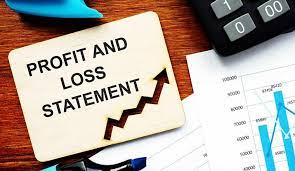Introduction
When a company's revenue, expenses, profits, and losses are summed up in a Standard Profit and Loss (P&''L) statement, it is known as an income statement or a statement of operations. Financial statements such as the P&''L show how well a company can generate revenue, control costs, and generate profits. Matching, revenue recognition, and accruals are used in the accounting process. As a result, it stands out from a cash flow report.

Structure of the Profit and Loss Statement
Over a specific period, a company's financial statement of profits and losses is presented. Among the P&''L's most important sub-categories are the profit made by the company (or Sales). They are selling Prices for Goods (or Cost of Sales). SG&''A (Sales, General, and Administrative) costs. Publicity and Marketing Innovation in the field of science and technology. Interest Costs. Taxes. Earnings before taxes
How to Calculate the P&''L Statement?
The P&''L statement, in particular, reveals information about the company's operational performance and the costs and expenses that affect its profits. To determine a company's ability to boost Profits (the "Top Line"). Control expenses and costs, such as COGS, Operating Costs, and SG&''A. Achieve Profitability, such as a gross margin, an operating margin, an EBITDA margin, and a net profit margin.
What Do P&''L (Profit And Loss) Statements Include?
Customers' revenue is what we call "revenue." a measure of a company's primary sales production's impact on its cost of goods sold (COGS). Costs not directly related to revenue generation, such as operating expenses or SG&''A. Debt Interest: The Cost of Making Payments on a Debt (i.e., Cost of Debt Financing). Paying taxes to local, state, and federal governments is mandatory. The "bottom line" profitability means net income after Deducting All Expenses/Costs.
How Do You Analyze?
Here are a few of the simplest things to overlook in your profit and loss statement:
1. Sales
First and foremost, it is critical to examine your sales because increasing them is the most effective way to increase profits. It's possible to repeat your success if you remember why a particular month was so successful.
2. Sources of Income or Sales
Consider whether all of your sources of revenue are logical and profitable for your business. In your opinion, which one is the most labor-intensive and has the smallest profit margins? Lemonade and chips are the primary sources of income in this scenario. If the chips were not selling, they should be removed or replaced with other chips or ones that are better known, perhaps. Both aren't harming the company.
3. Seasonality
It is known as "seasonality" because things change depending on the season. There are many ways to look at it, not just sales and expenses. The seasonality of sales can be seen in the case of lemonade. The heat rises as the summer months approach, along with the temperatures and sales that go along with them. Assuming this scenario plays out, higher prices for lemons may result due to increased demand and lower supply during the summer.
4. Cost of Goods Sold
The costs of selling your product are the next thing to consider. Because these costs are directly linked to the product you sell, it makes sense that they would rise in response to an increase in revenue. A red flag should be raised because this does not make any sense.
5. Net Income
Maintaining a steady positive net income is critical for your company's long-term success. Generally, you'd like to keep your profits as positive as possible. As long as the company has made a strategic investment to reduce costs or increase sales in another period, you are allowed to report the loss.

Differences
Profit and loss statements and income accounts have a few differences. Profit and loss statements show a company's gross profits, whereas accounts for profit and loss show its net profits. An income statement shows how much a company has grown over a specific period. Equity shareholders can claim a return on their investment from the company by using the company's profit and loss accounts.
Similarities
In many businesses, the terms "income statements" and "profit and loss accounts" are used interchangeably. They have a lot in common. Both accounting terms rely on a company's earnings and expenses to determine profit. Both are used for a specific period, typically one year or more. For equity shareholders, both are used to determine the company's net income at the end of the specified period.
Conclusion
When used together, the P&''L statement, balance sheet, and cash flow statement provide an in-depth look at a company's financial performance. Accountants use either the cash basis or the accrual method to compile financial statements. Since the changes over time become more significant than the numbers, it is imperative to examine P&''L statements from various accounting periods.









